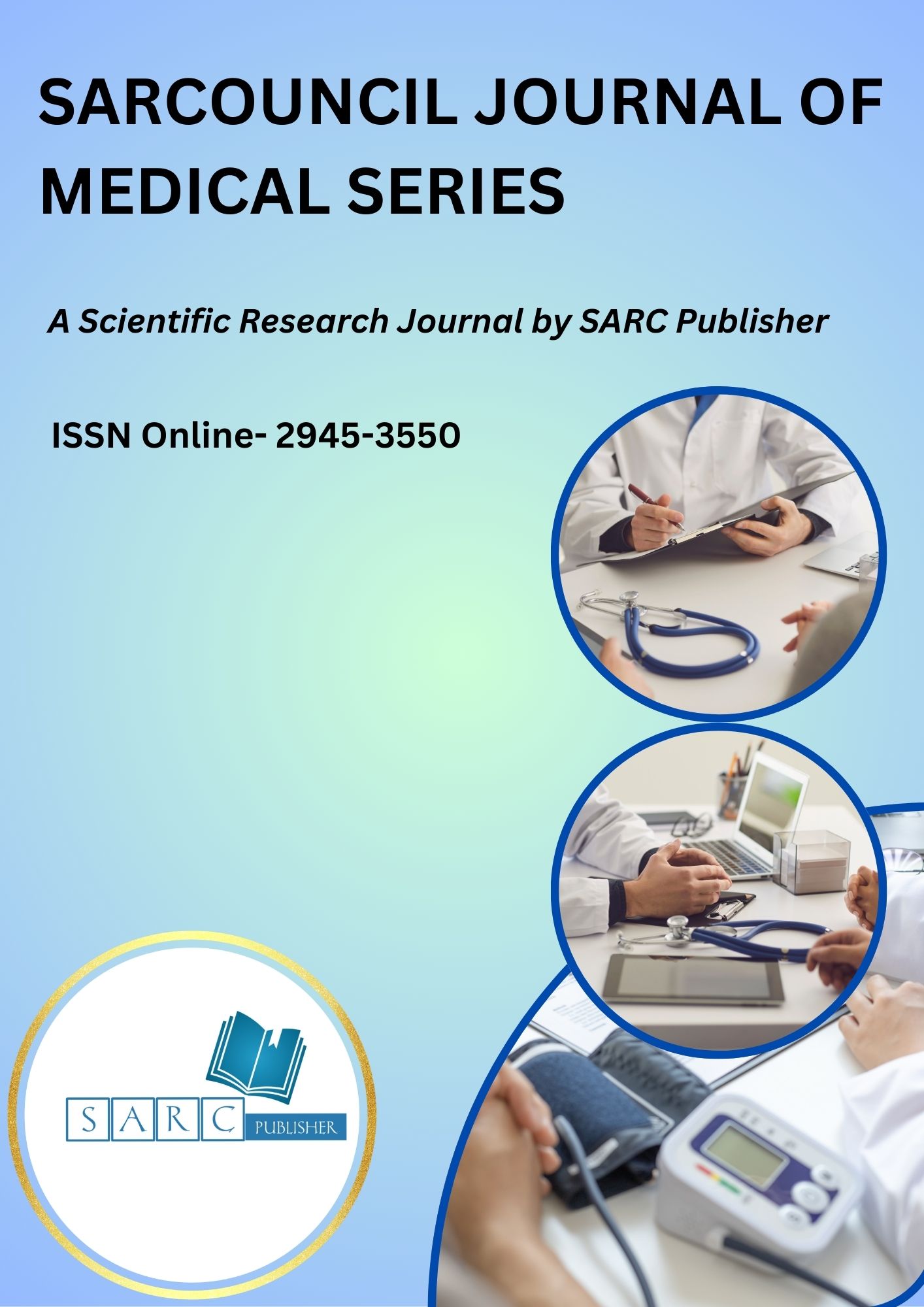Sarcouncil Journal of Medical Series

Sarcouncil Journal of Medical Series
An Open access peer reviewed international Journal
Publication Frequency- Monthly
Publisher Name-SARC Publisher
ISSN Online- 2945-3550
Country of origin- PHILIPPINES
Impact Factor- 3.7
Language- English
Keywords
- Pathology, Radiology, Serology, Surgery, Biochemistry, Biophysics, Cytology, Embryology, Endocrinology, Epidemiology, Genetics, Histology
Editors

Dr Hazim Abdul-Rahman
Associate Editor
Sarcouncil Journal of Applied Sciences

Entessar Al Jbawi
Associate Editor
Sarcouncil Journal of Multidisciplinary

Rishabh Rajesh Shanbhag
Associate Editor
Sarcouncil Journal of Engineering and Computer Sciences

Dr Md. Rezowan ur Rahman
Associate Editor
Sarcouncil Journal of Biomedical Sciences

Dr Ifeoma Christy
Associate Editor
Sarcouncil Journal of Entrepreneurship And Business Management
Alternative Causes Must be ruled out before Guillain Barre Syndrome with Cholangitis can be attributed to Campylobacter Jejuni
Keywords: Guillain-Barre syndrome, cholangitis, Campylobacter jejuni, intravenous immunoglobulins, immunology
Abstract: We read with interest the article by Segura-Chavez, et al. [Segura-Chávez, D. et al., 2023] describing a 38 years-old male with Guillain-Barre syndrome (GBS) and cholangitis resulting from previous infection during an epidemic of Campylobacter jejuni in Peru Segura-Chávez, D. et al., 2023]. The patient benefited from standard therapy with immunoglobulins (IVIGs) and made a full recovery from GBS [Segura-Chávez, D. et al., 2023]. He received prednisone for the cholangitis but did not fully recover from this [Segura-Chávez, D. et al., 2023]. The study is excellent but has limitations that are cause of concerns and should be discussed. A major limitation of the study is that it was not reported whether or not the index patient underwent RT-PCR for SARS-CoV-2 or testing for antibodies against SARS-CoV-2 [Segura-Chávez, D. et al., 2023]. SARS-CoV-2 is an established trigger of GBS and because the article was published in 2022, it is mandatory that this particular trigger is thoroughly ruled out. Also cholangitis has been reported as a complication of SARS-CoV-2 infections [Zdanowicz, K. et al., 2022]. It should also be ruled out that the index patient had received vaccination against SARS-CoV-2, which was time-linked to the onset of GBS and cholangitis. Anti-SARS-CoV-2 vaccines are known to trigger at least GBS [Finsterer, J. et al., 2022]. However, if the case actually happened in 2019, this should be mentioned in the case description. Another major limitation is that a causal relation between GBS and cholangitis was not established. The association remains a speculation as long as other causes of cholangitis were not adequately ruled out. The most common alternative causes of GBS to Campylobacter jejuni include Escherichia coli, Klebsiella, Enterococcus, Enterobacter, Pseudomonas, Staphyllococcus aureus, Salmonella, and anaerobes. There is no mention whether or not the blood culture grew any of these infectious agents. Another limitation is that cholangitis was not confirmed by magnetic resonance imaging (MRI) with contrast medium of the liver. Elevation of liver enzymes and positivity for anti-mitochondrial and anti-centromere B antibodies is not sufficient to diagnose cholangitis. Cholangitis needs to be confirmed by imaging studies. There is also no discussion about the possibility that elevation of liver enzymes was simply a side effect of IVIG’s, as previously reported [Stangel, M. et al., 2003]. Hepatopathy with elevation of liver enzyme is a known complication of IVIGs [Stangel, M. et al., 2003; Odaka, M. et al., 2005]. There was no mention of involvement of the respiratory muscles in GBS but it is reported that the patient was “extubated” [Segura-Chávez, D. et al., 2023]. We should be informed whether or not the patient had involvement of the respiratory muscles, particularly the diaphragm, in GBS or whether there were other causes for mechanical ventilation, in particular pneumonia, pulmonary embolism, heart failure, or neurotoxic edema. In summary, the interesting study has limitations that put the results and their interpretation into perspective. Addressing these issues would strengthen the conclusions and could improve the status of the study. Before attributing cholangitis to Campylobacter infection, alternative etiologies must be adequately ruled out.
Author
- Josef Finsterer
- MD; PhD; Neurology & Neurophysiology Center; Vienna Austria.

